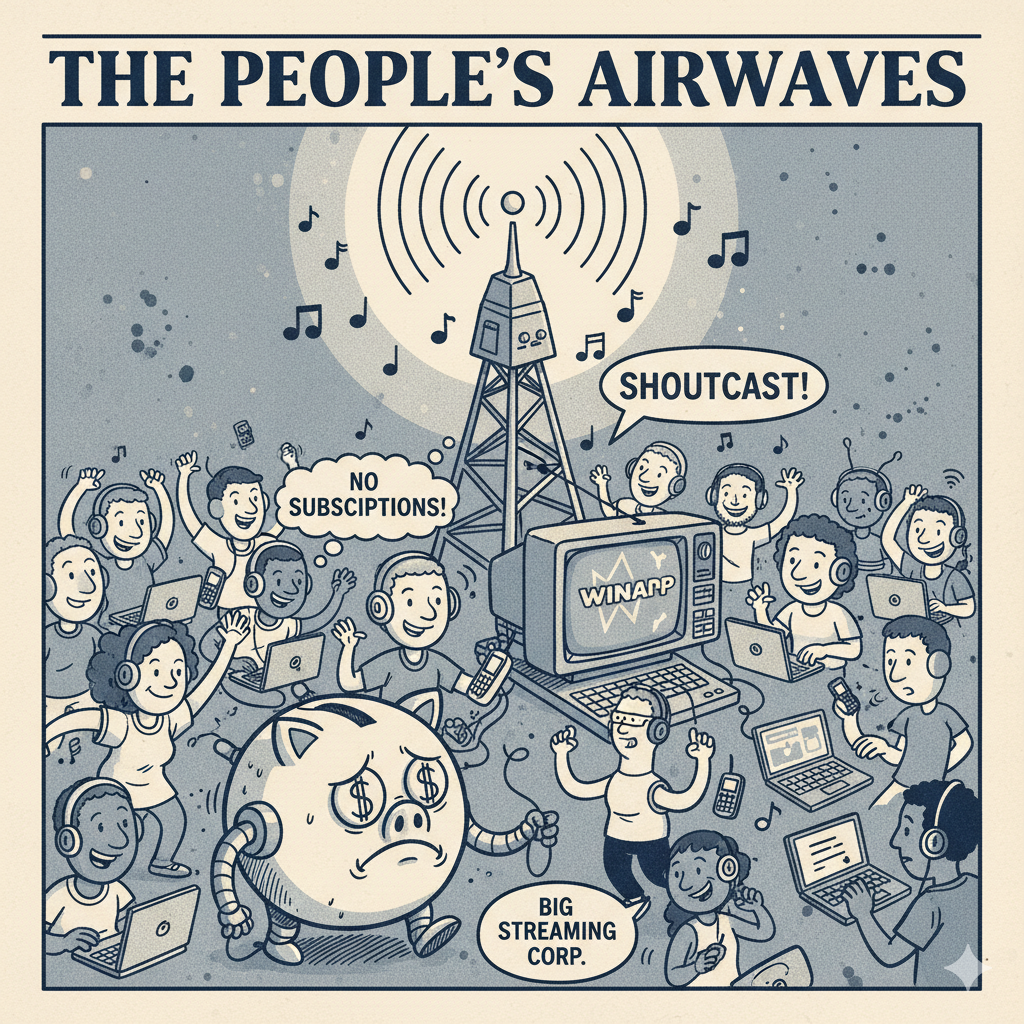The Original Internet Radio Blueprint: Forget Subscriptions, Remember Shoutcast

TL;DR: Shoutcast is the foundational, old-school internet radio technology that lets you broadcast audio streams using simple protocols, unlike today’s complex paid streaming services.
Let’s Dig In
Forget those monthly music subscriptions for a moment. Back when the internet was still finding its feet, a company called Nullsoft—the same crew that made the legendary Winamp music player—cooked up something called Shoutcast.
Think of Shoutcast as the original blueprint for an internet radio station. Instead of a giant company controlling everything, Shoutcast is a protocol, which is just a set of rules for talking over the network. It’s like a simple radio transmitter, but for the web. You set up a server—the digital broadcast tower—and use software to feed it your audio (MP3s, usually). This server then broadcasts that audio out, and anyone with a compatible player—like Winamp back in the day—can tune in.
The key here is simplicity and control. It bypasses the middlemen. The broadcast is just a continuous stream of data, very much like how you access a regular webpage using the basic rules of the web (HTTP). The clever trick was how it handled the song title. It would sneak little notes, called metadata, right into the stream. Imagine a musician slipping a handwritten note onto the vinyl record itself, telling the turntable player what song was playing while the music played. If the listener’s player wasn’t ready for the note, it just stripped it out and kept the music playing smoothly.
While today you pay a corporation to access their library, Shoutcast is the open, established framework that let any enthusiast or small group build their own public-access radio station that the whole world could theoretically find. It is the bedrock of independent internet radio.
Go Deeper:
Shoutcast: Home Page Winamp - Wikipedia Shoutcast - Wikipedia